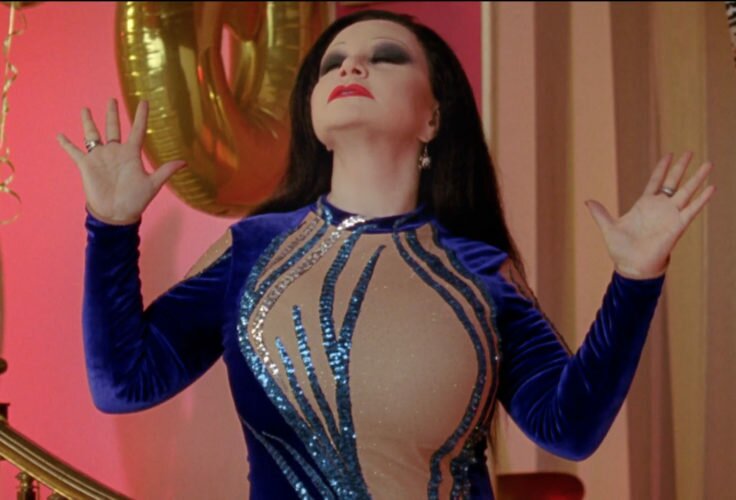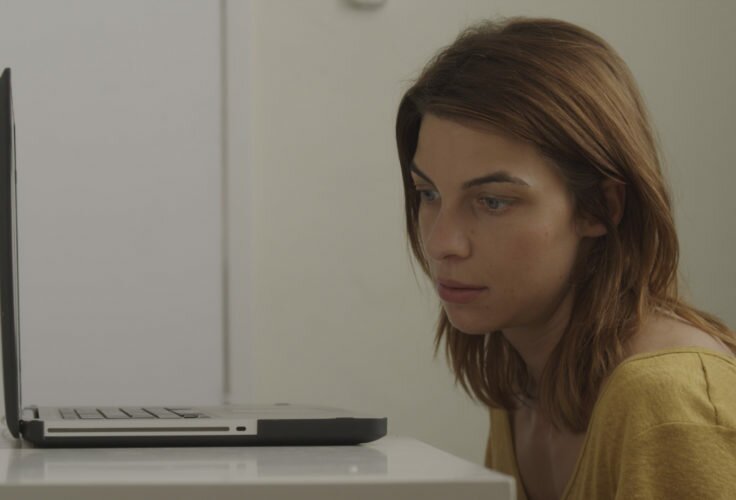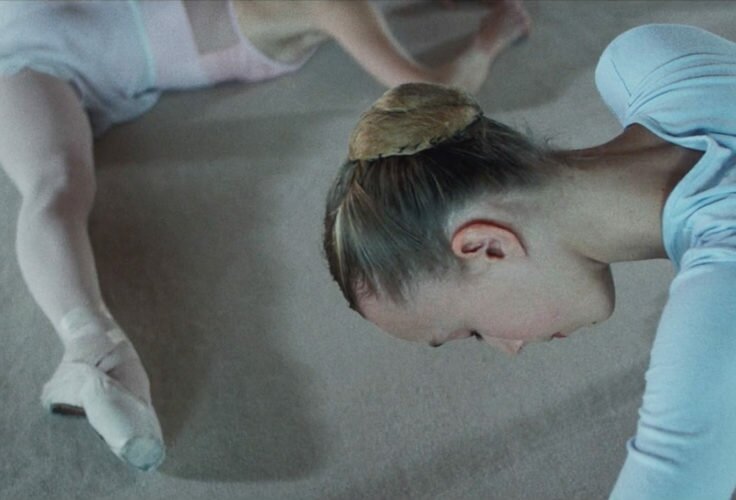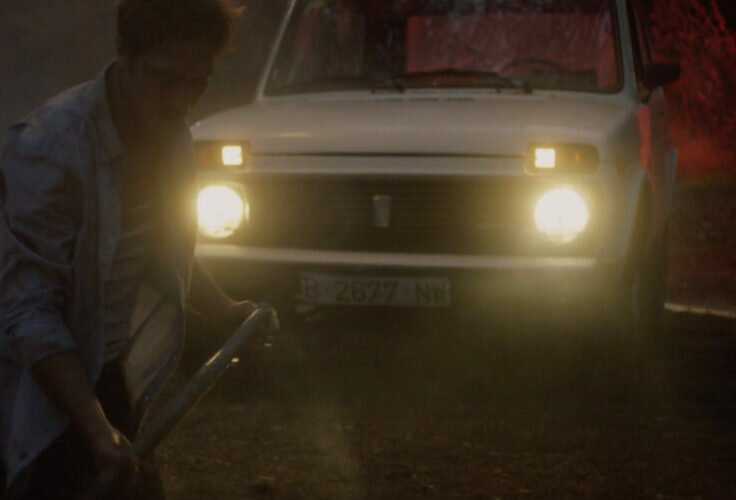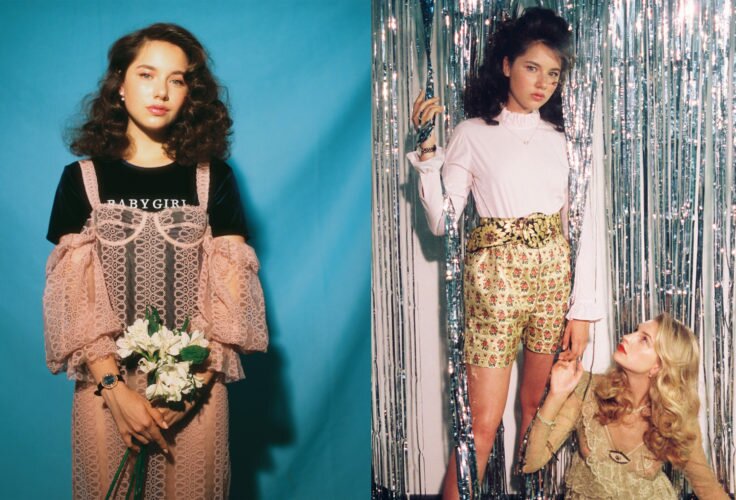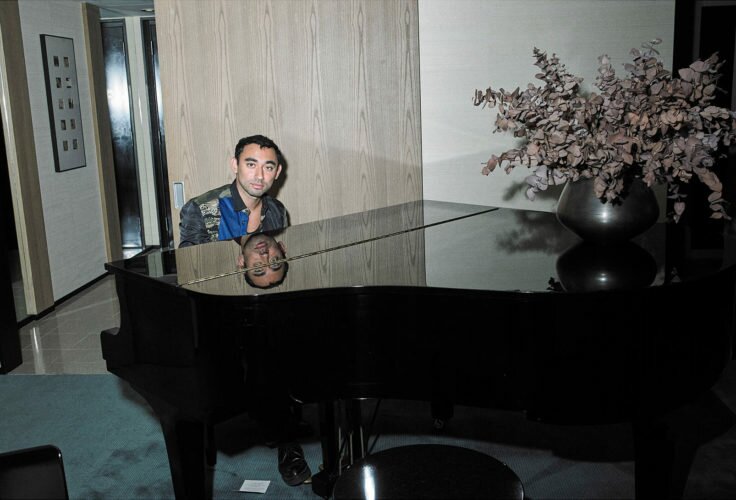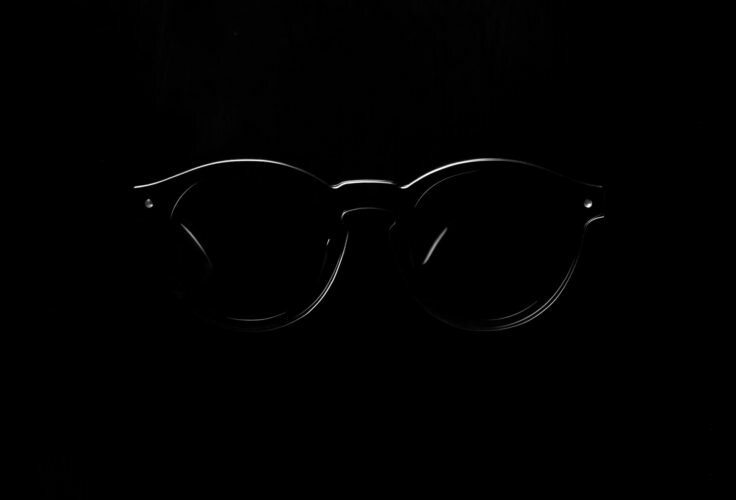We need a holiday. Like the one in this vintage GIF. Joan Pons justifies his current mental dullness through these images.
by Joan Pons

Marty McFly and the down vest every kid loves.
eborah Lynn Scott wasn’t aware of the fact that I was going to interview her until around five minutes before I started doing it. Sometimes, when you’re sent to cover the shooting of a film, you end up wandering about the set for hours on end, usually isolated from the external world, waiting for your allotted ten minutes (shared with other journalists, of course) with the film’s leading star or director. That’s when you need to activate your picturesque-scene detector and/or let yourself get carried away by curiosity. It’s not so much about taking notes or grant importance to any anecdotes that may occur during that open to press filming session (besides, not all of us can be as sharp and witty as David Foster Wallace was in his legendary feature article on the shooting of ). More likely, the idea is to agree to any possible interviews you might be offered with any members of the crew, be it as insignificant as they may appear at first, and try and get something from it. Because… you can always get something from them!
“Hey, I know we’re already more than two hours behind schedule, so would you like to interview Deborah? She’s there, inside her truck. If you would…”, says the PR person when he no longer knows what to do to keep me entertained. Deborah? Who’s Deborah? “Deborah Lynn Scott. She’s the costume designer. She’s won an Oscar”. Let me see… Google confirms this is correct, she won an Oscar for the costume design in Titanic. Oh, excellent! And IMDB also tells me that my possible interviewee is responsible for choosing the wardrobe of more than forty films since 1980. Among them Avatar, Transformers, The Amazing Spiderman 2: Rise of Electro, Minority Report, Looking For Richard, Streets of Fire, Heat, Wild Wild West, Sliver, The Patriot, The Island, Bad Boys II, Pain & Gain, and a few blockbusters more. In the long list of movies she’s worked at, two early titles call my attention in particular: E.T and Back to the Future. What?? Was this woman the person who selected the red hoodie Elliott wore and also the down vest that Marty McFly sported and I so much longed for during my teens? I need to check this out! So, yes, yes, I’m OK with spending ten minutes with the costume designer. Actually, not only pleased, but delighted!

Deborah Lynn Scott
The interior of Deborah Lynn Scott’s truck is a mixture between a take away disguise shop, a travelling sewing workshop and a gypsy version of the Narnia wardrobe. She welcomes me with a warm and hearty smile, but doesn’t stop working away at any moment: she answers my questions while she irons the trim of a white blouse. She doesn’t seem to give too much importance to the fact that some of her costume decisions have been the creative inputs that completed the expressivity and iconicity of a movie, helping it become, in some cases, part of our collective imagination. She affirms that she has always felt part of a team, nothing more, and if she tries to take full advantage of the creative possibilities her job entails is always in the most professional way possible, without any artistic pretensions. She’s paid to make these decisions, so she makes them.
The decision for Marty McFly to wear a red down vest in Back to the Future was yours, then?
Yes, of course.
OK, then, for my mother, you’re also responsible for having had to hear me begging her to buy me one like that for six months.
(Laughs). A lot of people tell me that! The truth is that when we chose it we didn’t think it was going to become such a popular garment, so cool. We simply needed an item that looked unusual in the fifties and, also, that could be joked about.
But why did you choose that type of vest in particular?
I guess it’s because it was very popular in the eighties, whereas thirty years back it would have seemed very strange, but not entirely unknown. At least not like something from the future. There’s actually a different moment in Back to the Future when Marty appears as someone from a different planet, when he scares his father with his Walkman and a kind of lab suit. But the vest was meant to have a different function: to the people from the fifties it should look like a piece of clothing they recognized, but not something that people used every day. That’s why he’s mistaken for a sailor or a harbour worker still wearing his lifesaving vest. On the other hand, we needed a very visible and outstanding garment. A cap or a pair of trainers just wouldn’t have been enough. They would have gone unnoticed. And an out of context jacket would have had to be very outrageous (in the eighties there were many!), but that wouldn’t have fitted the character. So a down vest was just the most realistic option
What about the red hoodie in E.T? Do you also feel responsible for the millions of kids asking their mothers to buy them the same one?
(Laughs) No! Not in this case. I guess it was way easier to find the same hoodie or at least a similar one in any shop. In this case, I don’t think the decision was so creative on my part. It was simply logical: they wanted a warm garment that stood out in the long shot, even at night time, and it also needed to make the main character stand apart from the rest of his friends. Choosing red was almost inevitable.
Red stands for a lot of other things too, right? Danger, tension… It also marks the character as a target…
Well, I don’t see it that way. We could have chosen a yellow or a flashy green hoodie, but… it would have been less plausible. At that time, kids from the suburbs, at least in America, didn’t wear those colours. Whereas red (a very basic red) was more frequent and realistic.
It’s the second time you defend one of your decisions on the basis of its “realism”. Is it so important for you?
My mission within a film is to manage, in a short period of time and with a budget different from the one I would like, to create a costume design as realistic as possible. I’d like to make one thing clear: I don’t mean realistic as adjusting to reality in general, but to the reality the people in charge of the movie have in mind. So we’re talking about credibility within fiction and according to the characters. It’s important for the clothes to be credible; they can neither be over the top nor just not enough.
What happens with fantastic or science fiction films?
It’s exactly the same. It’s even easier, in fact. In films about the future, costume coordinates are firmly dictated: they are all based on a previous artistic design. So, in those cases, I work more as a pattern designer. Costume design for period dramas is much more interesting. Quite often we have to deal with periods for which there are no photographs, only paintings. And paintings are of a very interpretative nature. They are the vision of an artist. So for that kind of job you have to make a bigger research effort: you go to museums, talk to historians and art specialists. A photograph can give you a more adjusted version of life and of proportions, even though you can also feel the eye of the artist. With a painting, you need someone to decode it: to tell you that the characters were probably taller or shorter than you think, the social class they belonged to, whether they were wearing day or special occasion clothes, what type of occasion it was…
Costume inspiration

Check this costume kit, you can also pretend to be Deborah Lynn Scott!

Elliott’s red hoodie from E.T
I see top hats, waistcoats, and amoeba pattern shirts… It isn’t easy to figure out what kind of film you’re working on now from the clothes I see around your truck.
It’s a kind of style inspired by seventies rock stars. Not based on very obvious trends, aesthetically, like glam or punk, but on musicians from the time nobody would say had a very specific look. But that isn’t true. Even seventies managers had a very recognizable way of dressing, if you look carefully. It’s like a post-hippie style, a bit Lauren Canyon. Currently, rock’s costume design is very boring, chosen by the record company so that it doesn’t interfere with the artist’s image or become artificially extravagant. In the seventies, everything was freer. James Taylor, Leonard Cohen, George Harrison or Lindsey Buckingham had a very particular style, each their own, between serious and spiritual. But never boring!
When you choose the clothes, do you think more about the characters or the actors that will play the parts?
It’s always the characters. During a project, unexpected casting problems can arise and actors might change. But characters will remain the same. Further on I adjust the clothes to the actors’ shape. What fits Bill Murray probably won’t fit Ben Stiller, for example. I give these two examples because, when it comes to comedy, sizes are very expressive: something looking too small or too big for the character will always be funnier than the perfect size.
How much room for creativity are you usually granted?
A lot. When they trust you, your job is to be creative. At first, I need some guidelines from the director’s team. But after that it’s my turn to be the one guiding them on the part I’m responsible for. So we give each other guidelines, depending on the stage of the process we find ourselves at.
Cut! Interviewus interruptus. The same PR person that offered me this interview now is taking it away from me. They need Deborah on the set for I don’t know which costume tests. I’m left behind like Cinderella, with the feeling that I’ve missed the opportunity to ask a million and one anecdotes and opinions about cinema trades that this woman probably hides in her closet. I’m also left with another kind of impression: I no longer think that the director is the only creative person interesting enough to interview (and from now on I won’t only make exceptions with photography directors, script writers and actors). From any of the names appearing at the end credits of a film, even the smallest ones, you can get something (very) interesting. So when a little while later I’m asked: “Would you like to talk to the film’s weapons specialist?” my answer is now absolutely full of enthusiasm: yes!!

Titanic costume design

Kate Winslet Titanic’s costume tests

Titanic costume design



